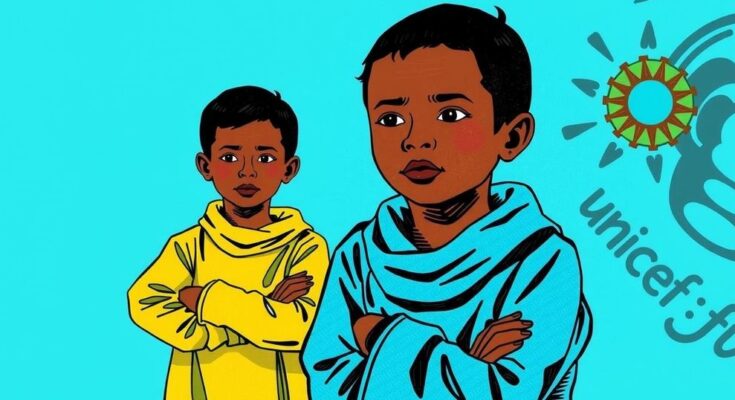UNICEF warns that children’s futures are at risk due to demographic changes, climate crises, and technological advancements. Immediate action is required from global leaders to ensure children’s rights are protected in a changing world, with significant implications for their well-being and development.
UNICEF has emphasized the precariousness of children’s futures in light of ongoing global challenges, underscored in a statement commemorating World Children’s Day on November 20. The organization identified three significant megatrends—demographic changes, climate and environmental crises, and advancements in technology—that could greatly affect children’s lives by 2050 and beyond. UNICEF Executive Director Catherine Russell called for immediate action, stating that children are already suffering from multiple crises and urged leaders to make decisions today that would shape a more favorable tomorrow for the next generation.
By 2050, demographic projections suggest that the number of children under the age of 18 may remain consistent at approximately 2.3 billion, with shifts in where these children reside. Most of the world’s child population will move to regions currently known for being among the poorest, such as Eastern and Southern Africa, West and Central Africa, and South Asia. Additionally, the rise in adult populations and the aging demographic poses further challenges, as the number of people aged 65 and above is expected to double by that time.
The report highlights significant concerns regarding climate change, as nearly half of all children reside in countries at high risk of environmental hazards. The negative impacts of climate change are already evident, including polluted environments affecting children’s health and well-being. Air pollution is cited as a primary risk factor for mortality in children below five years of age, influencing outcomes ranging from developmental issues to chronic health problems.
In terms of technological advancement, while new digital tools can offer educational and economic opportunities, risks also accompany these trends, including privacy invasion and exposure to harmful content. The digital divide remains stark; significant disparities exist in connectivity between children in high-income and low-income countries. Consequently, many young people lack essential digital skills necessary for future employment.
Catherine Russell highlighted the necessity for leaders to prioritize children’s welfare, emphasizing that the decisions made today will impact future generations. UNICEF asserts that only through collective, decisive actions can the adverse effects on children’s rights due to current global challenges be mitigated.
The topic addressed by UNICEF is crucial in today’s rapidly evolving global landscape, where children’s rights face unprecedented challenges. The organization highlights three primary factors—demographic shifts, climatic concerns, and technological changes—that will shape the children’s future. The report, released on World Children’s Day, calls for urgent action from global leaders to protect the rights of children and create sustainable opportunities for their growth and development moving forward.
In conclusion, UNICEF’s warnings about the future of children stress the urgency of addressing climate, demographic, and technological changes impacting their lives. Immediate action is necessary to ensure children can not only survive but thrive in a world catering to their needs and rights. Policies implemented today will determine the quality of life for future generations, making it imperative that children’s welfare remains a priority for global leadership.
Original Source: www.fijitimes.com.fj




